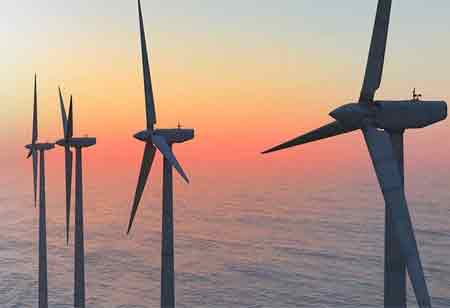Thank you for Subscribing to Energy Business Review Weekly Brief
Importance of Offshore Drilling Rigs
The demand for oil supply across the country is on the surge, and it relies heavily on the supply provided through offshore rigs and wells for attaining self-sufficiency in energy usage and economic growth.

By
Energy Business Review | Friday, April 28, 2023
Stay ahead of the industry with exclusive feature stories on the top companies, expert insights and the latest news delivered straight to your inbox. Subscribe today.
The offshore or Deep Sea drilling process is characterized by the mining of oils under the seabed using various mechanical excavation methods through the usage of wellbores. Oil fields under the ocean are explored using the drilling process conducted right after various geo-location programs.
Fremont, CA: The demand for oil supply across the country is on the surge, and it relies heavily on the supply provided through offshore rigs and wells for attaining self-sufficiency in energy usage and economic growth. The high rate of oil production and processing in the United States helped them surpass global superpowers of oil production such as Russia, Saudi, and Canada, and out of the total oil generated majority of it came out of the offshore wells located in the Gulf of Mexico.
Offshore drilling
The offshore or Deep Sea drilling process is characterized by the mining of oils under the seabed using various mechanical excavation methods through the usage of wellbores. Oil fields under the ocean are explored using the drilling process conducted right after various geolocation programs. Identification of the oil field leads to the usage of suitable oil rigs that can be employed in the process of offshore drilling for the efficient extraction of crude oil. The infrastructure development and technology usage in the offshore drilling process is immense owing to the large-scale economic investments made in the sector. Platforms are seen to leverage steel frameworks anchored to the floor of the ocean, and in addition to this, the drilling rigs often use movable structures to drill multiple wells.
In contrast, barges are most effective in shallow waters less than 20 feet deep. Floats are used to transport drilling rigs to the drilling site after the lower hull is sunk to the ocean floor. Platforms work similarly to jackups, but their foundation/legs aren't permanently attached to the ocean's bottom. A submersible barge can operate in water as deep as 50 feet. A semi-submersible and drill ship are floaters that don't fix to the bottom of the ocean but float instead and are capable of drilling up to 3000 meters down in the water.
Pros and cons of offshore drilling
Major advantages associated with the process of offshore drilling can be given out as
Higher oil production
A significant amount of oil production is achieved through the use of offshore drilling rather than relying solely on land-based explorations and extraction processes. High rates of natural gas and crude products are obtained as a result of the offshore drilling process and account for the majority share of production within an economy.
Ecosystems
The environmental impact of offshore drilling is often quickly pointed out by many people. It is important to note, however, that offshore rigs can create small ecosystems of birds, fish, and marine life, even when poorly managed, improperly drilled, and irresponsibly managed.
More employment
Local jobs are created by offshore drilling in a community. As an example, many offshore oil rigs have been built in Texas and Florida owing to the proximity of the OCS. Across generations of workers, offshore drilling facilities create new jobs and provide continuous employment opportunities. The launch of a new offshore drilling facility is often accompanied by entire towns and communities being built around it.
Oil Prices
Because oil and natural gas are produced self-sufficiently, the market demand can be buffered. By doing this, it is possible to keep prices under control. It is important to note that in the event that countries did not drill offshore, the resulting lower total production would significantly raise the price of fuels and related commodities, having a domino effect on the cost of living.
Technology Innovations
Because offshore rigs must operate in a challenging and complex environment, offshore drilling poses unique problems. As a result, countless breakthroughs, technologies, and innovations have been enabled and continue to be enabled.






